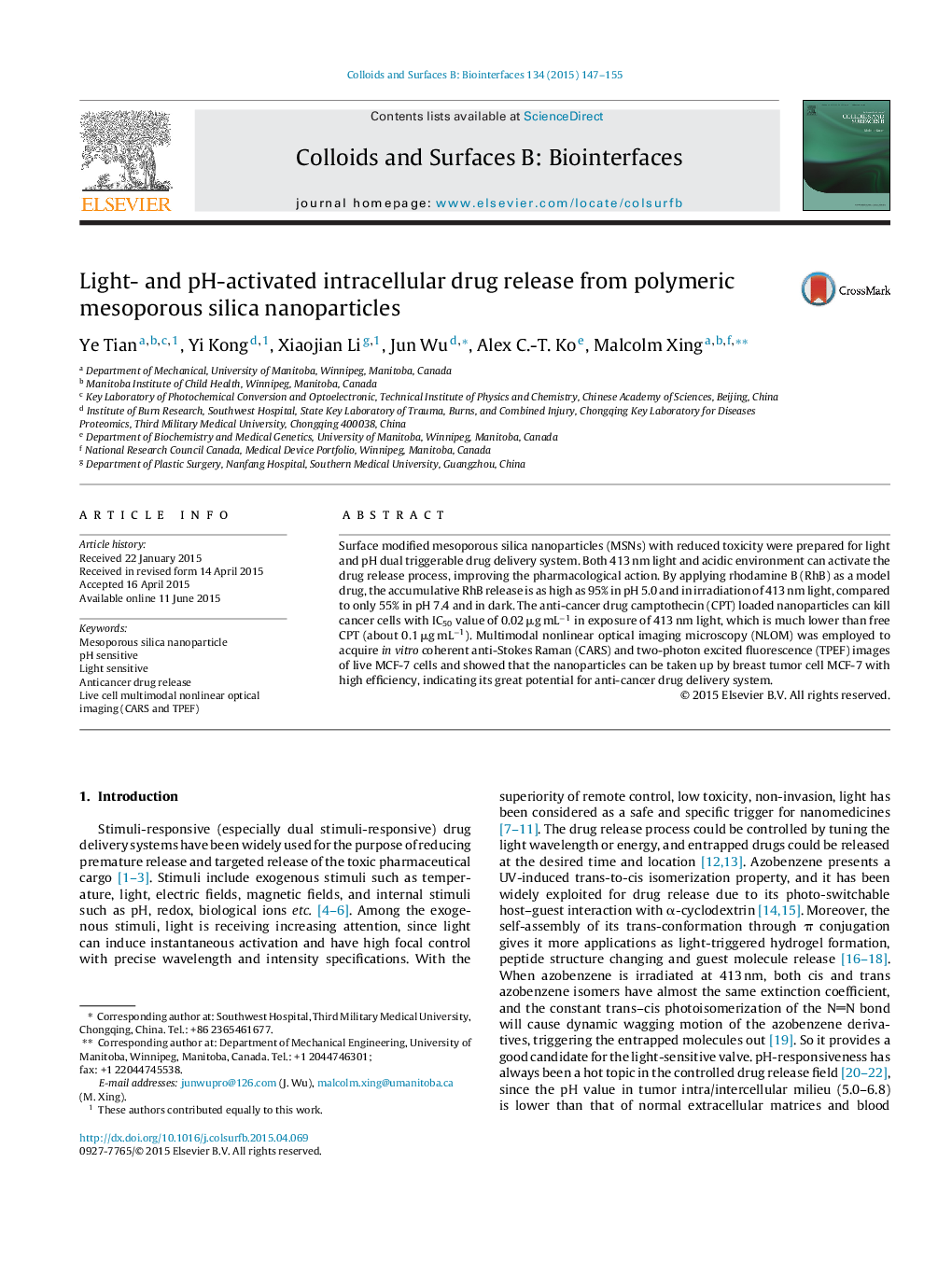| Article ID | Journal | Published Year | Pages | File Type |
|---|---|---|---|---|
| 599371 | Colloids and Surfaces B: Biointerfaces | 2015 | 9 Pages |
•Light-controlled drug release.•pH-sensitive polymer tailored silica nanoparticles.•Dual sensitive controlled released system.•Live cell imaging using nonlinear optical system (CARS and TPEF).
Surface modified mesoporous silica nanoparticles (MSNs) with reduced toxicity were prepared for light and pH dual triggerable drug delivery system. Both 413 nm light and acidic environment can activate the drug release process, improving the pharmacological action. By applying rhodamine B (RhB) as a model drug, the accumulative RhB release is as high as 95% in pH 5.0 and in irradiation of 413 nm light, compared to only 55% in pH 7.4 and in dark. The anti-cancer drug camptothecin (CPT) loaded nanoparticles can kill cancer cells with IC50 value of 0.02 μg mL−1 in exposure of 413 nm light, which is much lower than free CPT (about 0.1 μg mL−1). Multimodal nonlinear optical imaging microscopy (NLOM) was employed to acquire in vitro coherent anti-Stokes Raman (CARS) and two-photon excited fluorescence (TPEF) images of live MCF-7 cells and showed that the nanoparticles can be taken up by breast tumor cell MCF-7 with high efficiency, indicating its great potential for anti-cancer drug delivery system.
Graphical abstractFigure optionsDownload full-size imageDownload as PowerPoint slide
